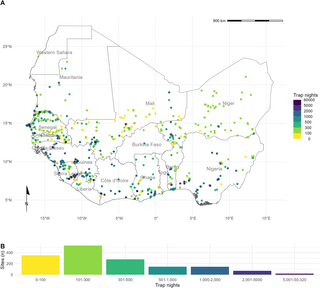


The number of zoonotic disease spillover events and the frequency of the emergence of novel zoonotic pathogens from rodents are predicted to increase under intensifying anthropogenic pressure driven by increased human populations, urbanisation, intensification of agriculture and climate change leading to altered rodent species assemblages [2–5]. The impact of endemic zoonoses meanwhile remains underestimated [6]. Endemic zoonoses disproportionally affect those in the poorest sections of society, those living in close contact with their animals and those with limited access to healthcare [7–9].
Rodents along with bats contribute the greatest number of predicted novel zoonotic pathogens and known endemic zoonoses [10,11]. Of 2,220 extant rodent species, 244 (10.7%) are described as reservoirs of 85 zoonotic pathogens [10]. Most rodent species do not provide a direct risk to human health and all species provide important and beneficial ecosystem services including pest regulation and seed dispersal [12]. Increasing risks of zoonotic spillover events are driven by human actions rather than by rodents, for example, invasive rodent species being introduced to novel ranges through human transport routes. Rodents typically demonstrate “fast” life histories which allow them to exploit opportunities provided by anthropogenic disturbance [13]. Within rodents, species level traits such as early maturation and short gestation times are associated with increased probabilities of being zoonotic reservoirs [10,14]. Rodent species with these traits are able to thrive in human dominated landscapes, displacing species less likely to be reservoirs of zoonotic pathogens [15]. The widespread occurrence of reservoir species and their proximity to human activity make the description of rodent species assemblages and host-pathogen associations vitally important to understanding the hazard of zoonotic disease spillover and novel zoonotic pathogen emergence [16].
Despite the importance of understanding these complex systems, current evidence on host-pathogen associations is considerably affected by taxonomic and geographical sampling biases [11,17]. Curated biodiversity datasets such as the Global Biodiversity Information Facility (GBIF) and resources produced by the International Union for Conservation of Nature (IUCN) suffer from well described spatial and temporal sampling biases [18,19].
These data are typically obtained from museum specimen collections and non-governmental organisation surveys. These sampling biases can importantly distort produced species distribution models that are used to infer risk of zoonotic disease spillover [20]. Datasets on host-pathogen associations (i.e., CLOVER) also can suffer from biases introduced from literature selection criteria and taxonomic discrepancies resulting in differential likelihood of accurate host-pathogen attribution by host species. These biases are important because identification of potential geographic hotspots of zoonotic disease spillover and novel pathogen emergence are often produced from these types of host species distributions and host-pathogen associations [21,22].
For example, systematically increased sampling, over-representation of certain habitats and clustering around areas of high human population could lead to an apparent association between locations and hazard that is driven by these factors rather than underlying host-pathogen associations [11,23,24]. Predictions of zoonotic disease spillover and novel zoonotic pathogen emergence must account for these biases to understand the future hazard of zoonotic diseases [22].